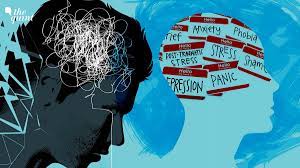Unveiling the Psychology of Hazard Perception: A Deep Dive for Theory Test Success

Table of Content
Aspiring drivers preparing for their Theory Test often encounter a unique challenge – hazard perception. Recognizing potential hazards on the road requires more than just rote memorization of rules; it involves understanding the psychology behind human perception and decision-making. In this comprehensive exploration, we embark on a journey to unravel the intricacies of hazard perception psychology and how a deep understanding can elevate theory test practice to ensure success.
Understanding the Human Brain and Hazard Perception
Perceptual Filters:
The human brain is bombarded with an overwhelming amount of visual information every second. Perceptual filters help individuals prioritize and focus on relevant information. Understanding these filters is crucial for hazard perception during theory test practice.
Selective Attention:
Selective attention dictates where the brain directs its focus. In hazard perception, drivers need to be adept at selectively attending to potential risks amid the myriad of visual stimuli. Theory test practice that emphasizes selective attention hones this critical skill.
Cognitive Load Theory:
Cognitive load theory posits that individuals have a limited capacity for processing information. Hazard perception relies on managing this cognitive load effectively. Theory test practice should train drivers to handle information processing efficiently, a skill vital for hazard perception.
The Role of Experience and Expertise
Expert vs. Novice Perception:
Experienced drivers and novices approach hazard perception differently. Experts rely on accumulated experience to recognize subtle cues, while novices may struggle to identify potential risks. Integrating real-world scenarios into theory test practice bridges the gap between novice and expert perception.
Simulation and Immersive Learning:
Simulation exercises mimic real driving scenarios, providing theory test practice participants with a virtual experience that mirrors on-road situations. Immersive learning through simulations enhances hazard perception by exposing learners to diverse and dynamic situations.
Emotions and Hazard Perception
Impact of Emotional States:
Emotions play a significant role in perception. Anxiety, stress, or overconfidence can alter a driver’s ability to perceive hazards accurately. Theory test practice should incorporate strategies to manage emotions, ensuring a clear and focused mindset during hazard perception.
Cognitive Bias and Perception:
Cognitive biases, such as confirmation bias or inattentional blindness, can impact hazard perception. Understanding these biases is crucial for theory test practice, as it enables learners to consciously counteract them and make more objective judgments on the road.
Cognitive Processes and Decision-Making
Speed of Processing Information:
The ability to process information swiftly is vital for hazard perception. Theory test practice should include exercises that enhance the speed of processing visual cues, ensuring drivers can make split-second decisions on potential hazards during the actual test.
Anticipation and Prediction:
Skilled drivers anticipate and predict potential hazards before they unfold. Theory test practice that encourages anticipatory thinking trains learners to look ahead, assess potential risks, and make decisions based on these predictions.
Integrating Psychology into Theory Test Practice
Interactive Learning Tools:
Theory test practice tools that leverage interactive learning, such as hazard perception apps and online platforms, engage participants in real-time decision-making. These tools simulate the dynamic nature of hazard perception, providing valuable insights into the psychology behind effective decision-making.
Scenario-based Exercises:
Scenario-based exercises in theory test practice immerse learners in realistic driving situations. By navigating through these scenarios, participants develop a heightened awareness of potential hazards, honing their ability to apply psychological principles to real-world driving.
Feedback and Reflection:
Immediate feedback on hazard perception performance is a cornerstone of effective theory test practice. It allows learners to reflect on their decisions, understand the psychology behind their choices, and refine their approach to hazard perception.
Real-world Application of Hazard Perception Psychology
On-road Hazard Perception Training:
Advanced theory test practice can extend beyond the virtual realm to on-road hazard perception training. This involves supervised drives where learners apply their psychological understanding of hazard perception to actual driving conditions.
Case Studies of Successful Hazard Perception:
Analyzing real-life case studies of successful hazard perception can be a valuable learning tool. Theory test practice can incorporate narratives of drivers who made astute hazard identifications, providing insights into the psychology behind their decisions.
Conclusion: Elevating Theory Test Practice with Psychology
In conclusion, hazard perception is not just about observing the road; it’s about deciphering the intricate dance between the human mind and the dynamic environment. Understanding the psychology behind hazard perception is a game-changer for theory test practice. By incorporating insights into perceptual filters, selective attention, the impact of experience, emotional states, cognitive biases, and decision-making processes, learners can elevate their hazard perception skills.
Theory test practice that integrates these psychological principles becomes a holistic journey of preparing not just for an exam but for a lifetime of safe and responsible driving. As we unravel the layers of the human mind in the context of hazard perception, we pave the way for a new paradigm in theory test practice—one that nurtures drivers who not only pass the test but excel in safeguarding themselves and others on the roads.




